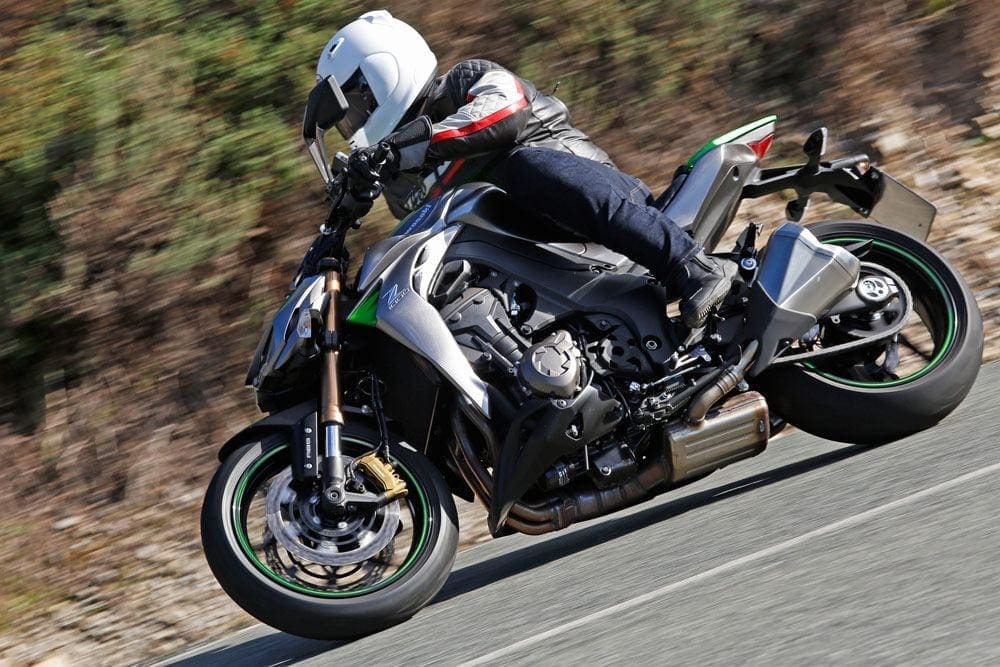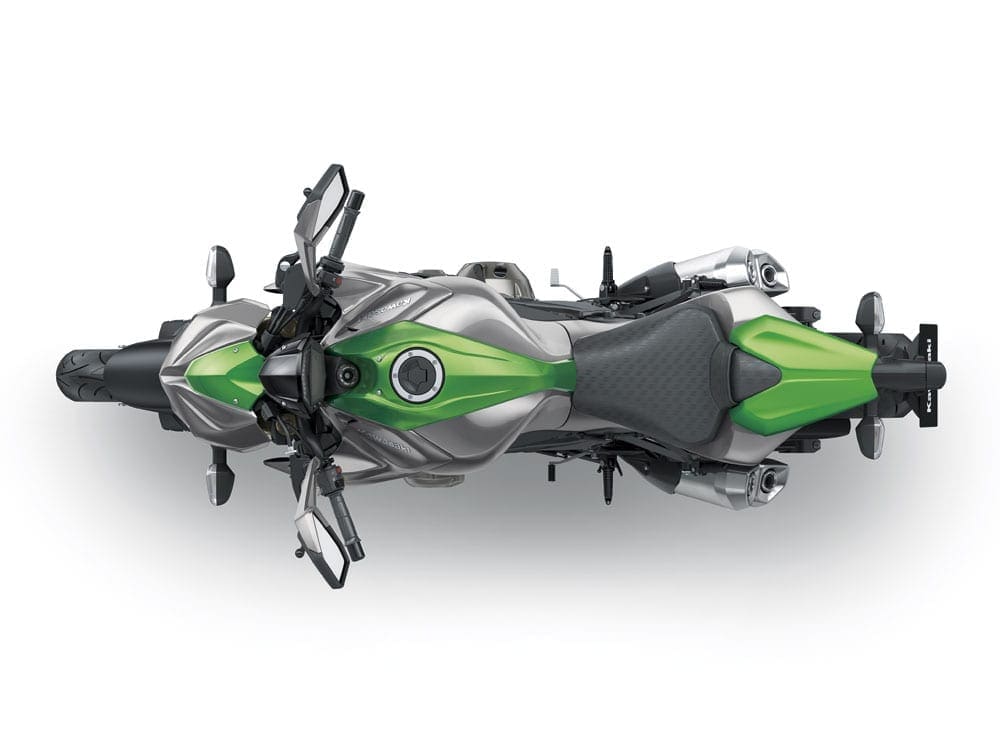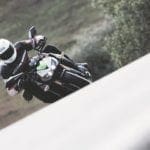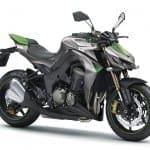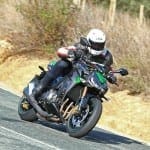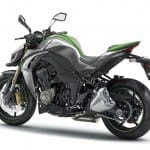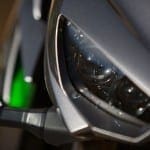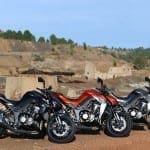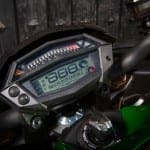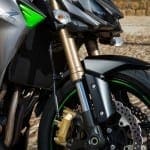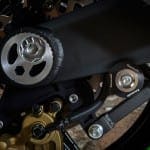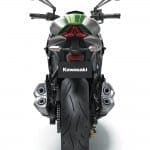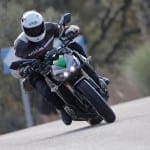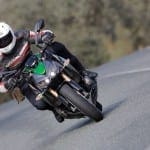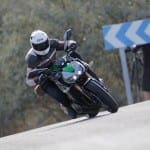From £9499 | 140bhp@10,000rpm | 82lb-ft@7300rpm | liquid-cooled inline four-cylinder
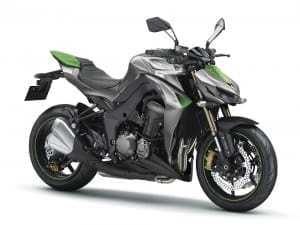 Described as ‘the most radical supernaked’ bike, Kawasaki’s 2014 Z1000 is an evolution of the machine first launched in 2004, and last updated in 2010. Aggressive styling and performance follow the Japanese company’s ‘Sugomi’ philosophy, with the tweaks, nips and tucks of the 2014 model going a lot deeper than the head-turning looks…
Described as ‘the most radical supernaked’ bike, Kawasaki’s 2014 Z1000 is an evolution of the machine first launched in 2004, and last updated in 2010. Aggressive styling and performance follow the Japanese company’s ‘Sugomi’ philosophy, with the tweaks, nips and tucks of the 2014 model going a lot deeper than the head-turning looks…
Tell me about the engine
The capacity remains the same as last year’s model, yet both power and torque have been upped for 2014 – the small increases throughout the rev range have been achieved mainly by modifying the fuelling system. The ECU is remapped, giving a very direct throttle response, which makes for a motor that’s both easy to ride lazily, but can explode into life when pushed.
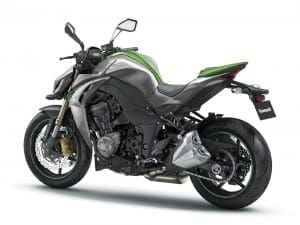 Kawasaki wanted to maintain their ‘trademark top-end surge’, and sure enough, as the LED rev counter reaches 7000-8000rpm, it’s like an almighty hand has started shoving you from behind until you reach 140bhp at 10,000rpm. It’s far from peaky though – I found the bike was quite happy to sit in third gear for much of the twisty Seville roads of the launch, allowing a lazy ride that never stuttered, even in low-rpm tighter corners. Spare a thought for our French cousins – for now at least, they’ll be getting a bike with a more conservative 104bhp@9000rpm and 70lb-ft@6000rpm
Kawasaki wanted to maintain their ‘trademark top-end surge’, and sure enough, as the LED rev counter reaches 7000-8000rpm, it’s like an almighty hand has started shoving you from behind until you reach 140bhp at 10,000rpm. It’s far from peaky though – I found the bike was quite happy to sit in third gear for much of the twisty Seville roads of the launch, allowing a lazy ride that never stuttered, even in low-rpm tighter corners. Spare a thought for our French cousins – for now at least, they’ll be getting a bike with a more conservative 104bhp@9000rpm and 70lb-ft@6000rpm
The bike features an automatic Eco mode – when your speed, gear and throttle position are at an optimum point, a light on the clocks tells you that the ECU is using a slightly different map, to give you around 8% better fuel economy. It’s impossible to say what the general economy of the bike was like on the launch, as it was topped up with a jerry can at lunchtime. I’d expect similar figures to the previous model – around 35mpg – and with a two litre larger tank than the previous model, you’ll be able to go that bit further in 2014. But not if you ride hard – holding, erm, ‘spirited’ speeds for a 16mile section of the test route saw the fuel gauge drop from half, to just above empty.
A lot of fuss has been made about the Z’s mass-centralisation – getting a bike’s weight as close to the roll, yaw and pitch axes – and even the new reflector-less LED lights (a first for Kawasaki) are intended to bring the forward mass as close to the forks as possible. It certainly doesn’t seem to be hype: at 220kg, the new model is 2kg heavier than it used to be (1.5kg of this could be the extra fuel in the tank), and 22kg heavier than a ZX-10R. However, it’s carried so well that the Z1000 never feels unwieldy. A low seat and narrow aluminium frame makes the bike feel very small as you ride it, with the weight appearing low to the ground.
The wide bars are ideal for town work, or just chucking the machine about in twisty roads. At high speed, and over poor surfaces, the steering can get a little lively, but never seems to stray into a scary wobble or weave. You have to push it to get the bars to flap, but the Z1000 stays playful, and never wants to bite.
The rear shock is horizontal, like the previous model and the ZX-10R, but has tweaked damping and a more progressive linkage. Showa Big Piston Forks (BPF) are upside-down, with preload on the left, and damping on the right. These are the same style as the ZX-6R 636, tuned for sporty and street riding. All this tech adds up to a firm, but comfortable ride that gives you loads of feedback.
New monobloc calipers on the front are branded Kawasaki, but made by Tokico. They’re controlled with a radial master-cylinder, and although it’s very easy to stop with just one finger, they give great feedback (which is handy when you’re riding the non-ABS version on cobbled Spanish streets). The ABS model gains 1kg for its Bosch pump, but it’s worth it for a reliable and unintrusive system – brake hard and there’s none of the harsh locking and unlocking felt with some other designs.
Should I buy one?
This bike’s great for commuting; Sunday rides; fast scratching and trackdays. Because the engine pulls so strongly at low revs, it can be ridden like a mild-mannered muscle bike. Hold on through the revs though, and the surge is incredible, firing you through overtakes. You could easily have a leisurely ride to Cadwell in the top three gears, then work the clean-action gearbox hard around the track, taking advantage of the wide bars and low weight to see off many full-on race-reps.
As a commuter, it’s got some great advantages, though if you also like touring, you might want to consider the Z1000SX for its larger tank and greater luggage capacity. You could still go a long way on this bike though, and it’s good to see little touches like bungee hooks built into the pillion footpeg hangers.
Prices start at £9499 for the black or orange bikes, but they don’t have ABS. If you want one in green, you’ll have to buy the special edition for £200 more. For £10,099 you get ABS, but only in green (which of course is everyone’s favourite Kawasaki colour!).
Loud exhausts are less popular now, but even with the standard road-legal pipes (Akrapovic cans with removable baffles are an option), the Z sounds sublime. Kawasaki used clever computer modeling techniques to tune the air box for an incredible howl as you open the bike up. The engineer responsible for settling on 16 holes in the new resonator was certainly thinking ‘Sugomi’ when he created it!
At UK motorway speeds, it’s surprisingly comfortable for a naked bike. The lower riding position, and modern styling seem to push the air around you, rather than into you. It’d be great on track, with the constantly changing speed, but get on an Autobahn and you’d start to feel the strain in your neck and legs after long periods above 120mph.
It’s a lot of fun, whether your blood’s up and you want to really work the bike, or you’re just taking in the scenery whilst letting the superb engine do all the hard work.
Tested by John Milbank Photography by Double Red
Tech Spec
Price: From £9499
Engine: Liquid-cooled inline four-cylinder Power: 140bhp@10,000rpm
Torque: 82lb-ft@7300rpm
Weight: 220kg
Seat height: 815mm
Tank size: 17litres

